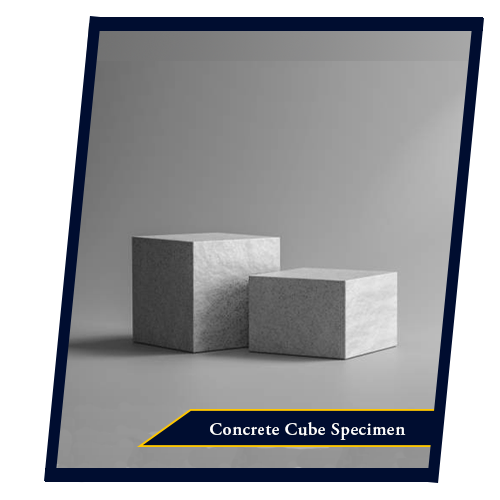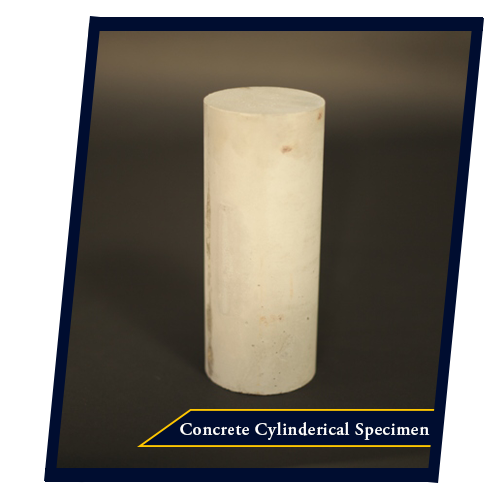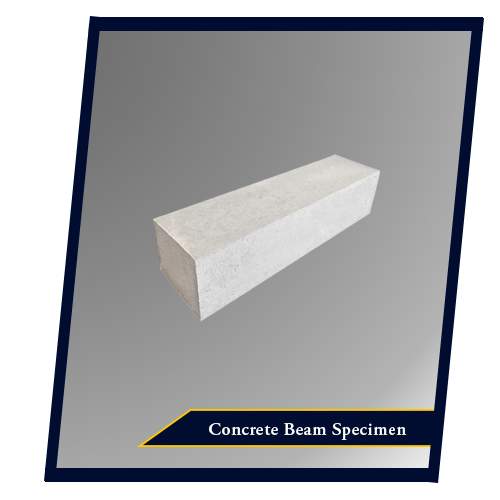
Your Guide To Compression Testing Machines
Compression Testing Machines – Ever wondered why different construction materials are used for roads, bridges, and houses? These constructions differ based on their construction strength.
However, what decides the strength of a material and if it will be suited for a particular application?
How different materials respond to pressure determines their application. It is important to understand how brittle the material is to know if it will be suited for a specific use. Compression tests are thus performed to find out a material’s fracture properties and assess its safety, durability, and integrity.
A mechanical test that involves testing the response of a material or product to push, compression, crushing, and flattening of the test specimen is termed a compression test. These tests are used to evaluate the strength of materials under compressive loads.
A compression testing machine is an apparatus used to determine the compressive strength of materials, such as concrete and cement. They use the concept of a hydraulic mechanism. The compression property of material needs to be analyzed because it plays an important role in determining the strength and durability of the built structure. More compressive strength indicates a capability to withstand more pressure.
These machines also compute the elastic limit, proportionality limit, and yield point of the specimen.
Specimens Used in Compression Machine
A compression test is performed on a specimen using platens or special tools. Specimens can be full-size actual components, their scale models, or just machined specimen of the material.
A compression machine tests cubical and cylindrical specimens of various compositions and sizes. The size of these specimens also affects the resultant compression strength, and thus, testing sizes have been standardized.
In construction, the concrete composition names are denoted as M20, M25, M30, M,35, M40, and M45. Here, M means mixed design, and the number represents its strength on the 28th day. This way, they decide the mix proportion of concrete based on the strength required for application.
The size range includes 70.6 mm, 100 mm, 150 mm cubes 50 X 100mm, 75 X 150mm 100 X 200mm, and 150 X 300mm cylinders
Types of Machines
Different materials are tested using popular industry-standard compression test methods. These include uniaxial, biaxial, triaxial, cold temperature, elevated temperature, fatigue, and creep compression tests. Here are the different types of machines that perform these tests:
- Analog type-PTK-AM-101
- Electrical type with analog reading-PTK-EC-101
- Electrical type with digital reading-PTK-EDC-101
- Semi-automatic with touch control and graphical option- PTK-SA-101
- Pace rate-controlled machine with smart features. PTK-PC-101.
Diffrence Between Analog and Digital Machine
The analog and digital machines are the same in functioning and principle but differ in terms of the output format. An analog compression machine is less accurate as compared to a digital one. It gives the result on a pressure gauge, whereas a digital machine displays it on an LED screen.
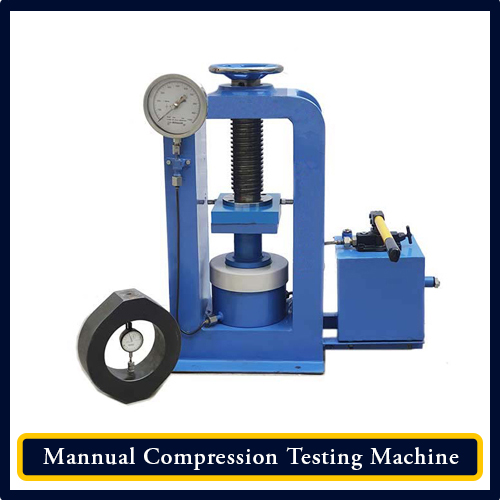
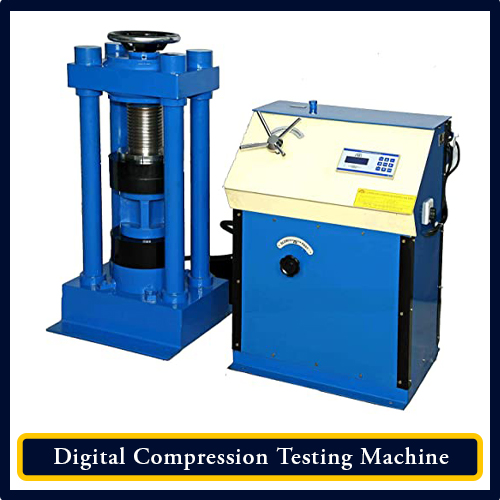
Diffrence Between Semi-Automatic and Pace Rate Controlled Machine
A Semi-automatic compression testing machines are electrically controlled with a 5” & 7” touchscreen. It presents the result in graphical format. The result is highly accurate and can be as precise as 0.001kn. The load vs time graph can be obtained and the result can then be printed using an on-spot thermal printer.
A pace rate-controlled machine, on the other hand, is fully automatic. They facilitate a smooth process with the help of a high torque stepper motor. It comprises a loading unit, a hydraulic power pack, and a pace rate controller. These machines are highly robust and come with advanced features like touchscreens, pause and reset capabilities, etc. They have an extra capability that puts them into a very different domain of technology. They can control the loading rate with high accuracy from 0.200N to 2000N per second as per ASTM standard and 5.14kn to the required value based on IS.
Frequency of specimen checking and acceptable strength of the specimen
The specimen in a compression testing machines are tested in 3 segments, i.e. 7 days, 14 days, and 28 days. The strength of a resultant specimen depends on material composition and different strengths have different applications.


